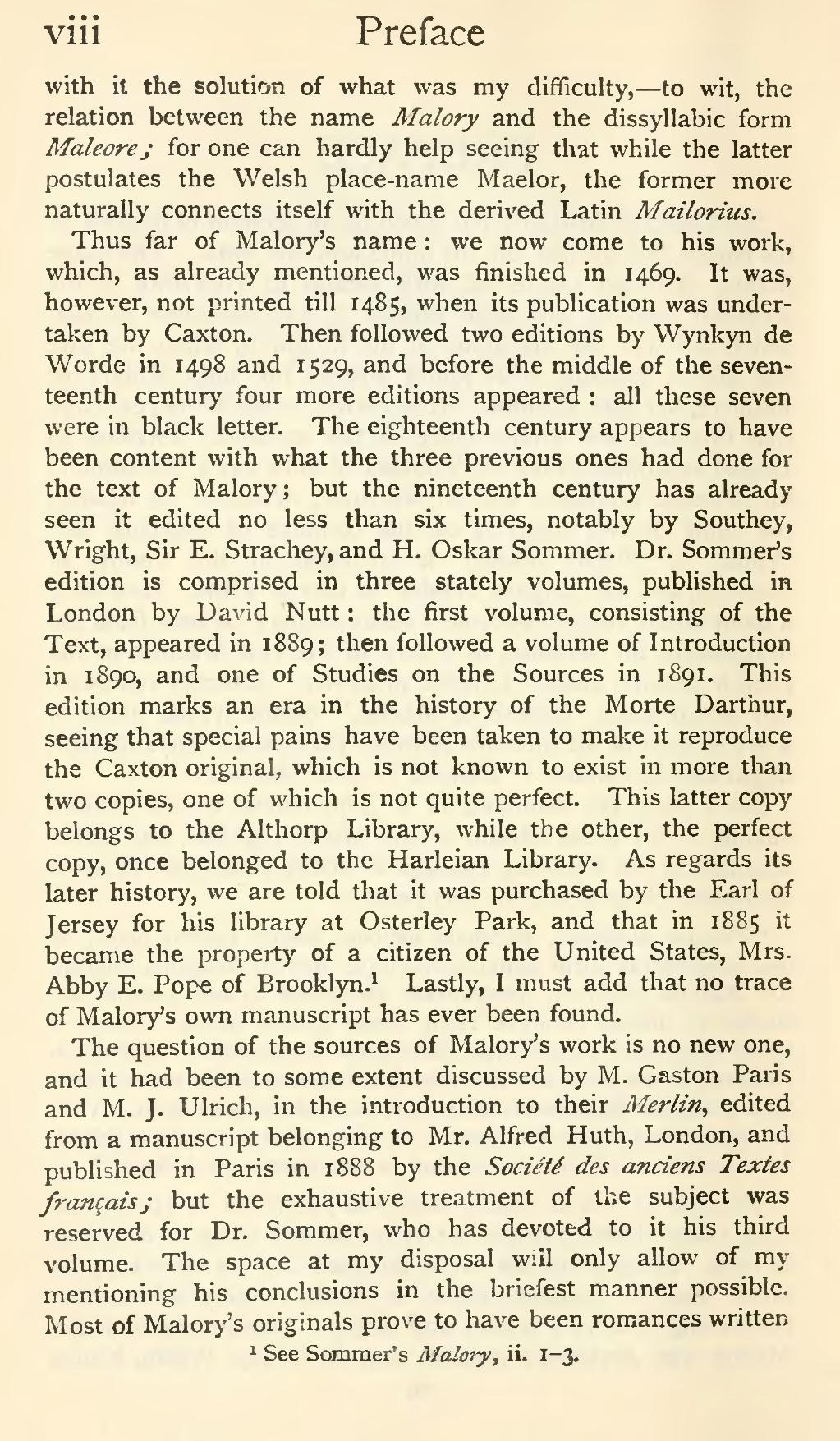with it the solution of what was my difficulty,—to wit, the relation between the name Malory and the dissyllabic form Maleore; for one can hardly help seeing that while the latter postulates the Welsh place-name Maelor, the former more naturally connects itself with the derived Latin Mailorius.
Thus far of Malory’s name: we now come to his work, which, as already mentioned, was finished in 1469. It was, however, not printed till 1485, when its publication was undertaken by Caxton. Then followed two editions by Wynkyn de Worde in 1498 and 1529, and before the middle of the seventeenth century four more editions appeared: all these seven were in black letter. The eighteenth century appears to have been content with what the three previous ones had done for the text of Malory; but the nineteenth century has already seen it edited no less than six times, notably by Southey, Wright, Sir E. Strachey, and H. Oskar Sommer. Dr. Sommer’s edition is comprised in three stately volumes, published in London by David Nutt: the first volume, consisting of the Text, appeared in 1889; then followed a volume of Introduction in 1890, and one of Studies on the Sources in 1891. This edition marks an era in the history of the Morte Darthur, seeing that special pains have been taken to make it reproduce the Caxton original, which is not known to exist in more than two copies, one of which is not quite perfect. This latter copy belongs to the Althorp Library, while the other, the perfect copy, once belonged to the Harleian Library. As regards its later history, we are told that it was purchased by the Earl of Jersey for his library at Osterley Park, and that in 1885 it became the property of a citizen of the United States, Mrs. Abby E. Pope of Brooklyn.[1] Lastly, I must add that no trace of Malory’s own manuscript has ever been found.
The question of the sources of Malory’s work is no new one, and it had been to some extent discussed by M. Gaston Paris and M. J. Ulrich, in the introduction to their Merlin, edited from a manuscript belonging to Mr. Alfred Huth, London, and published in Paris in 1888 by the Société des anciens Textes français; but the exhaustive treatment of the subject was reserved for Dr. Sommer, who has devoted to it his third volume. The space at my disposal will only allow of my mentioning his conclusions in the briefest manner possible. Most of Malory’s originals prove to have been romances written
- ↑ See Sommer’s Malory, ii. 1–3.
